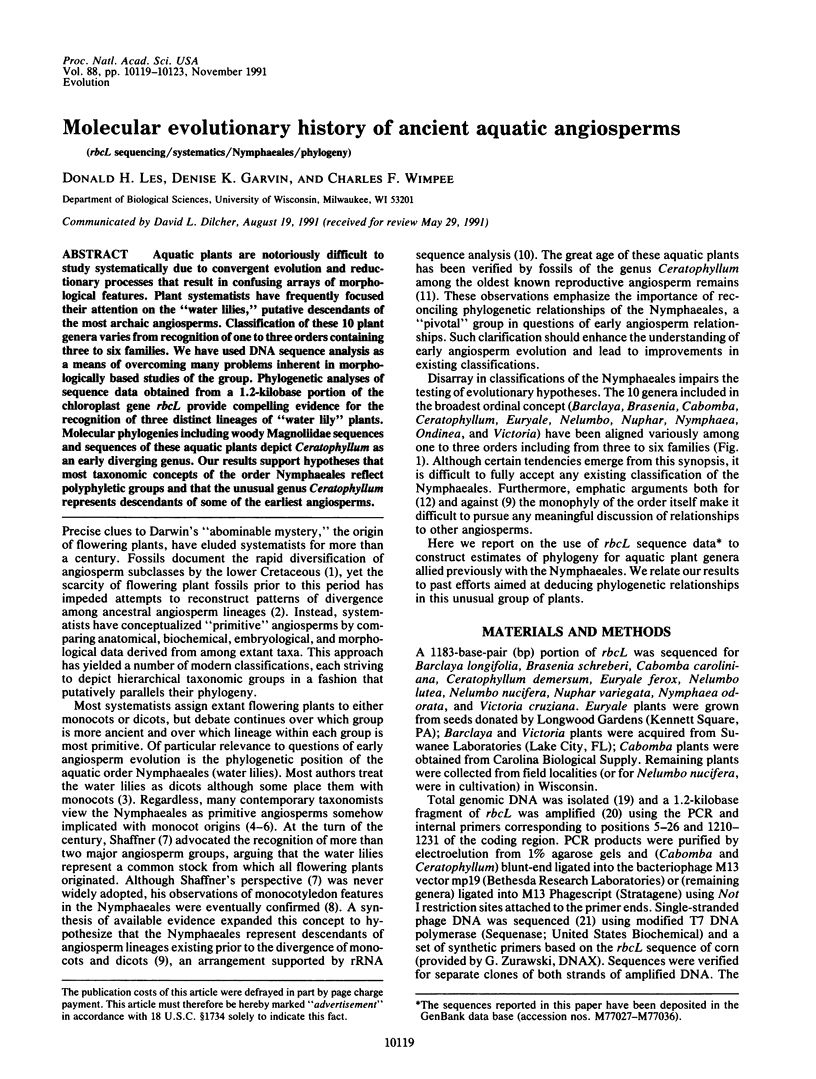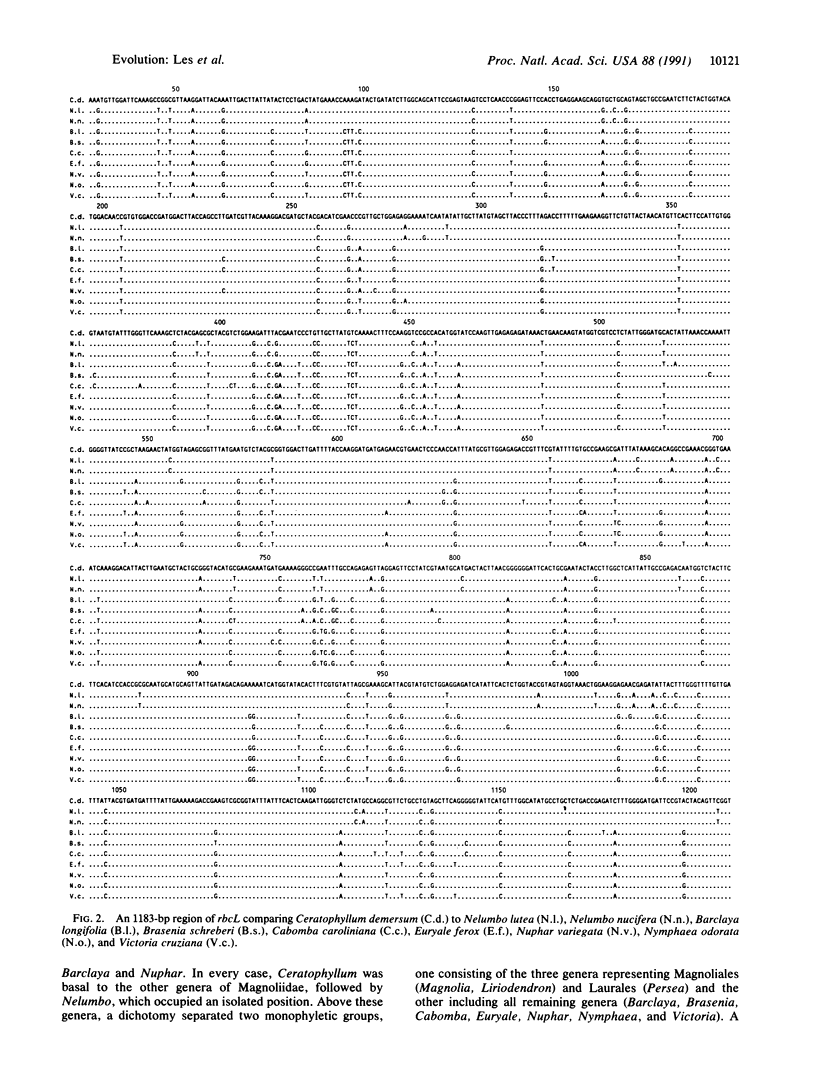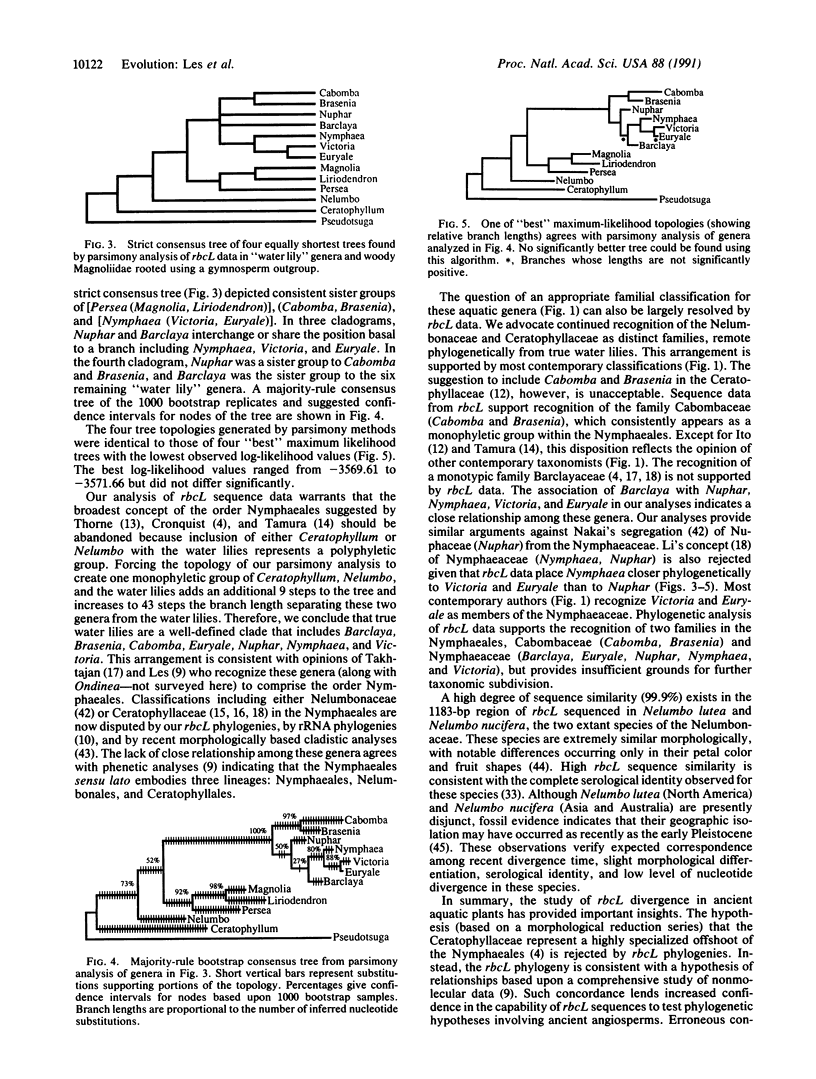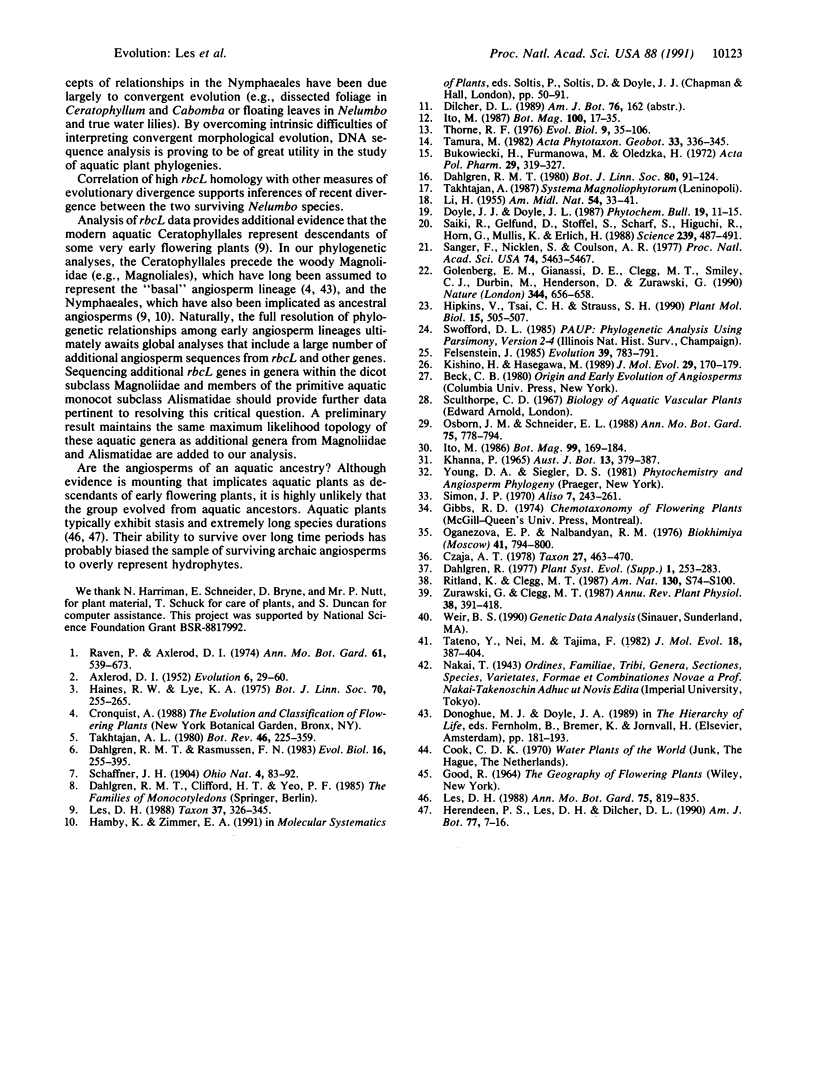Abstract
Aquatic plants are notoriously difficult to study systematically due to convergent evolution and reductionary processes that result in confusing arrays of morphological features. Plant systematists have frequently focused their attention on the "water lilies," putative descendants of the most archaic angiosperms. Classification of these 10 plant genera varies from recognition of one to three orders containing three to six families. We have used DNA sequence analysis as a means of overcoming many problems inherent in morphologically based studies of the group. Phylogenetic analyses of sequence data obtained from a 1.2-kilobase portion of the chloroplast gene rbcL provide compelling evidence for the recognition of three distinct lineages of "water lily" plants. Molecular phylogenies including woody Magnoliidae sequences and sequences of these aquatic plants depict Ceratophyllum as an early diverging genus. Our results support hypotheses that most taxonomic concepts of the order Nymphaeales reflect polyphyletic groups and that the unusual genus Ceratophyllum represents descendants of some of the earliest angiosperms.
Full text
PDF




Selected References
These references are in PubMed. This may not be the complete list of references from this article.
- Golenberg E. M., Giannasi D. E., Clegg M. T., Smiley C. J., Durbin M., Henderson D., Zurawski G. Chloroplast DNA sequence from a miocene Magnolia species. Nature. 1990 Apr 12;344(6267):656–658. doi: 10.1038/344656a0. [DOI] [PubMed] [Google Scholar]
- Hipkins V. D., Tsai C. H., Strauss S. H. Sequence of the gene for the large subunit of ribulose 1,5-bisphosphate carboxylase from a gymnosperm, Douglas fir. Plant Mol Biol. 1990 Sep;15(3):505–507. doi: 10.1007/BF00019168. [DOI] [PubMed] [Google Scholar]
- Kishino H., Hasegawa M. Evaluation of the maximum likelihood estimate of the evolutionary tree topologies from DNA sequence data, and the branching order in hominoidea. J Mol Evol. 1989 Aug;29(2):170–179. doi: 10.1007/BF02100115. [DOI] [PubMed] [Google Scholar]
- Myszkowska K. Zastosowanie hydrolizatów kazeiny i albuminy mleka jako składnika podłoza do oznaczania witamin z grupa B i tryptofanu. Acta Pol Pharm. 1972;29(3):319–324. [PubMed] [Google Scholar]
- Oganezova E. P., Nalbandian R. M. Ochistka i svoistva plastotsianina i ferredoksina iz Ceratophyllum demersum L. Biokhimiia. 1976 May;41(5):794–800. [PubMed] [Google Scholar]
- Saiki R. K., Gelfand D. H., Stoffel S., Scharf S. J., Higuchi R., Horn G. T., Mullis K. B., Erlich H. A. Primer-directed enzymatic amplification of DNA with a thermostable DNA polymerase. Science. 1988 Jan 29;239(4839):487–491. doi: 10.1126/science.2448875. [DOI] [PubMed] [Google Scholar]
- Sanger F., Nicklen S., Coulson A. R. DNA sequencing with chain-terminating inhibitors. Proc Natl Acad Sci U S A. 1977 Dec;74(12):5463–5467. doi: 10.1073/pnas.74.12.5463. [DOI] [PMC free article] [PubMed] [Google Scholar]
- Tateno Y., Nei M., Tajima F. Accuracy of estimated phylogenetic trees from molecular data. I. Distantly related species. J Mol Evol. 1982;18(6):387–404. doi: 10.1007/BF01840887. [DOI] [PubMed] [Google Scholar]


